Exercise Science Bone Recognition
1/18
There's no tags or description
Looks like no tags are added yet.
Name | Mastery | Learn | Test | Matching | Spaced |
|---|
No study sessions yet.
19 Terms
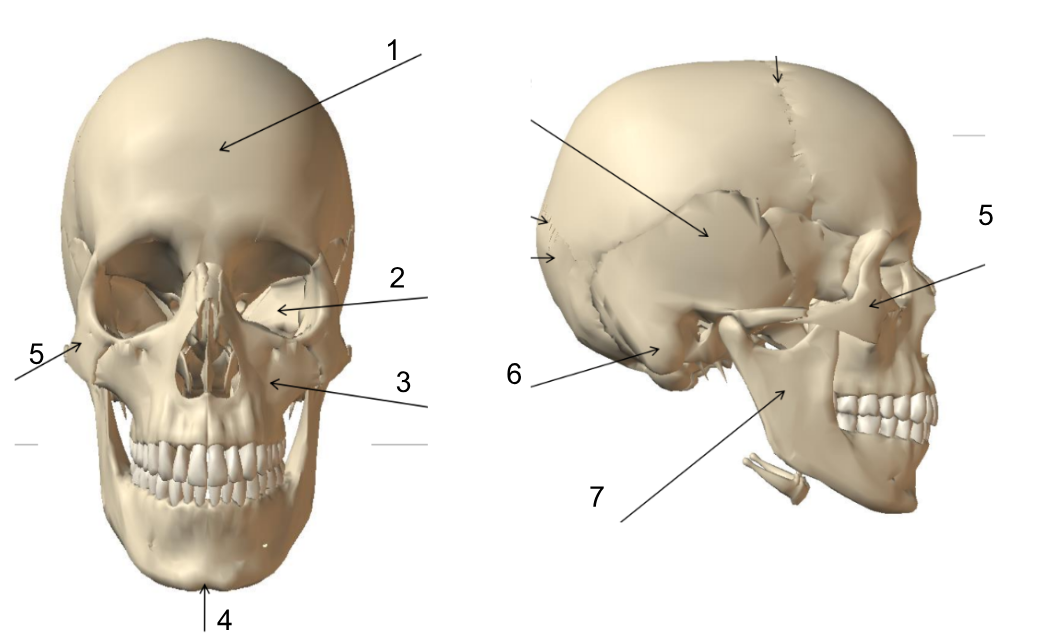
Cranium
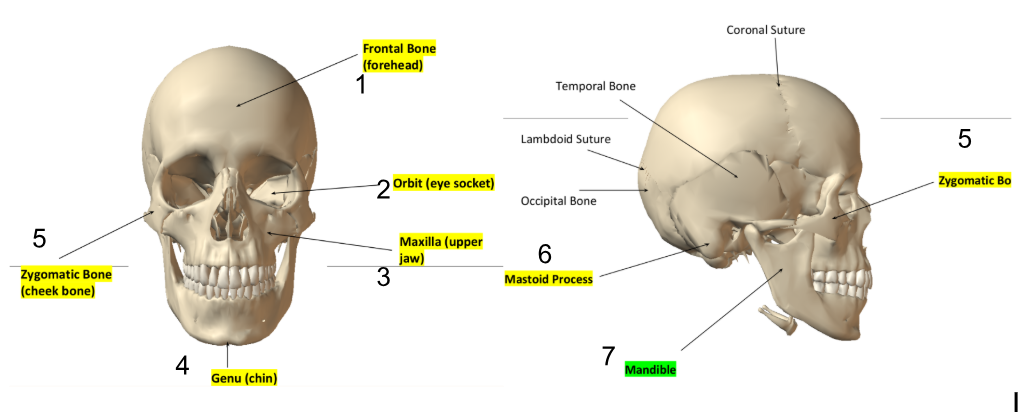
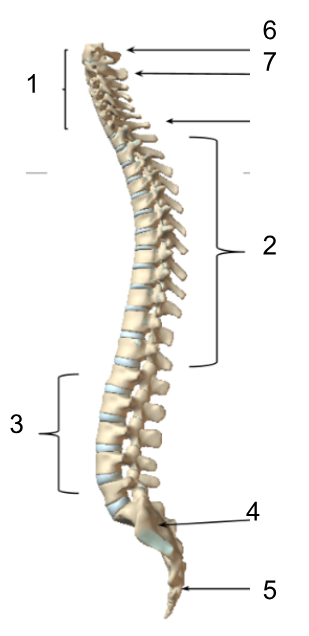
Vertebral column

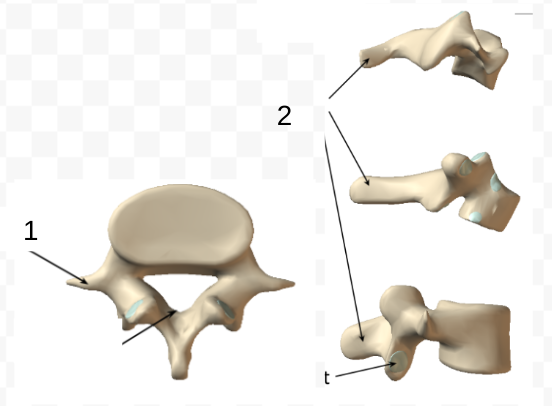
Vertabrae
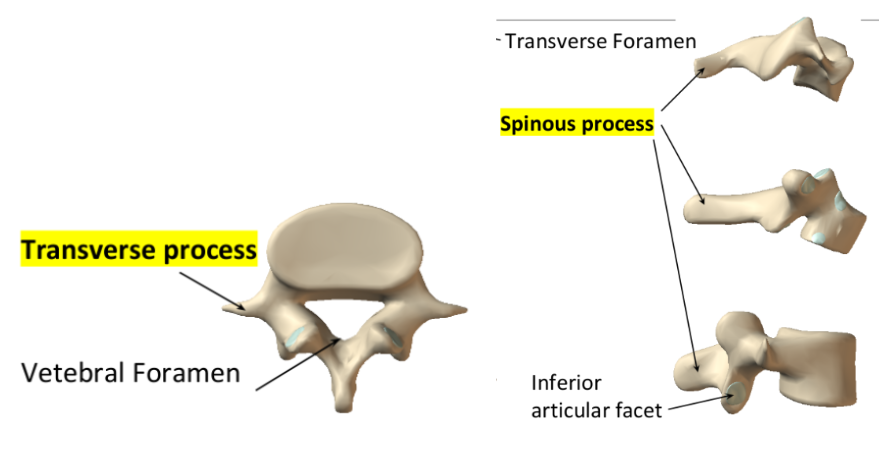
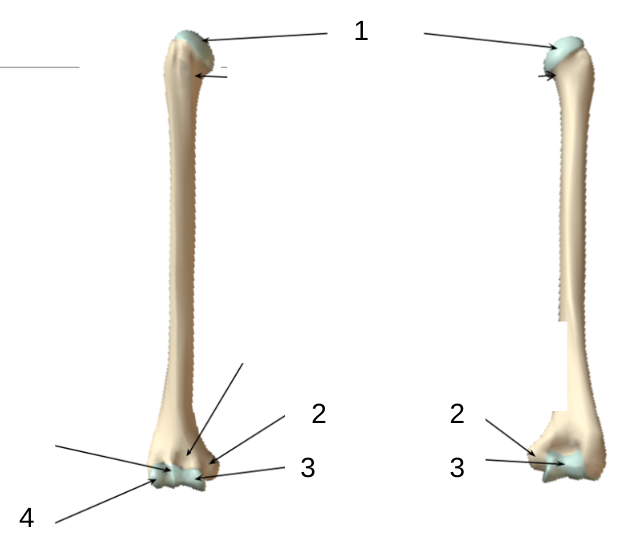
Humerous
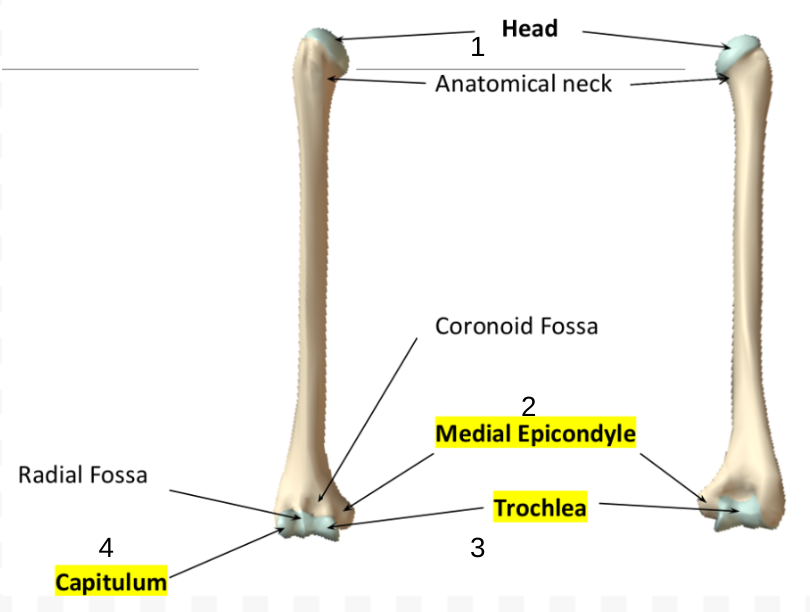

How do you orient the humerus?
First orient the bones so that the rounded head is superior (up) and pointing medially (toward the body's midline).
Look for the deep olecranon fossa on the posterior side (where the olecranon process of the ulna fits in when the elbow is straightened).
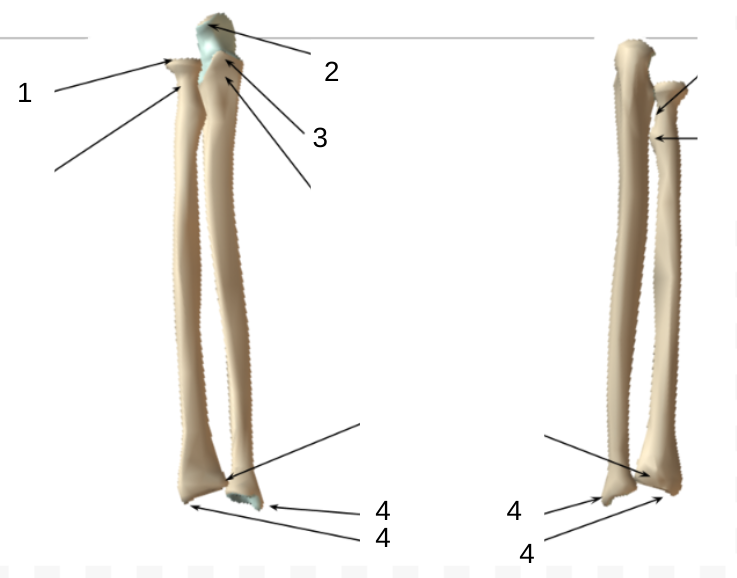
Radius and Ulna
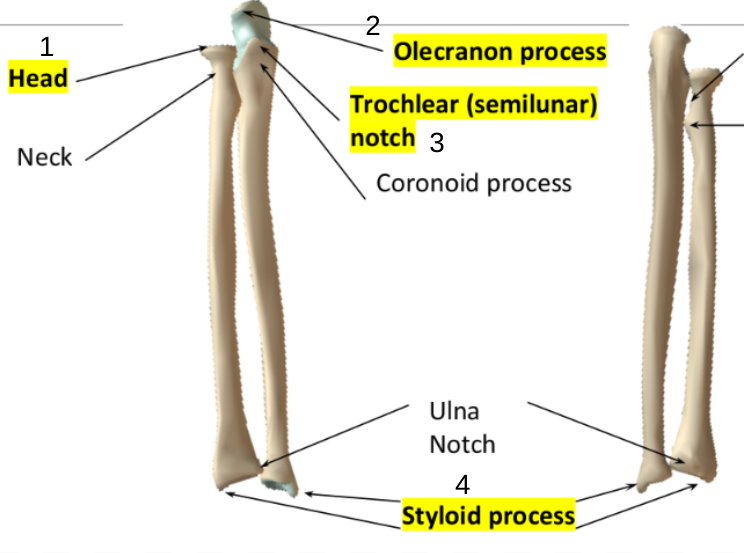

Radius and Ulna
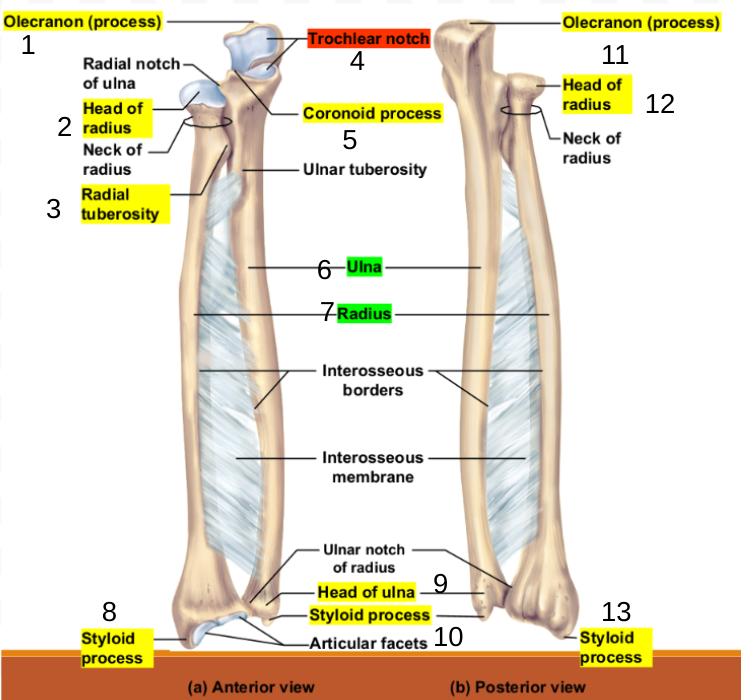
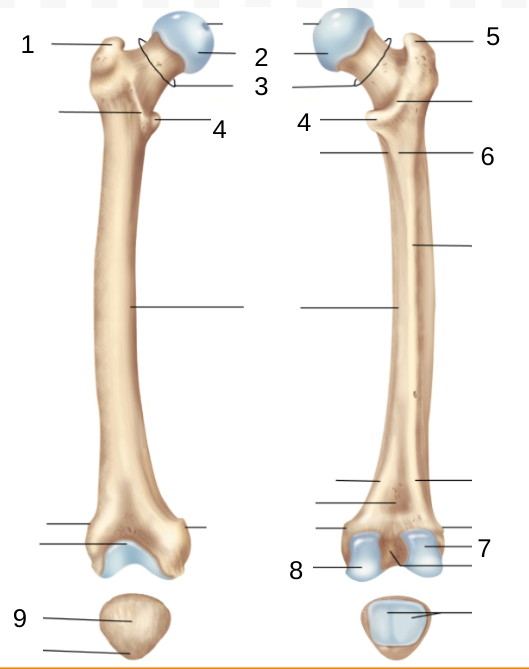
Femur
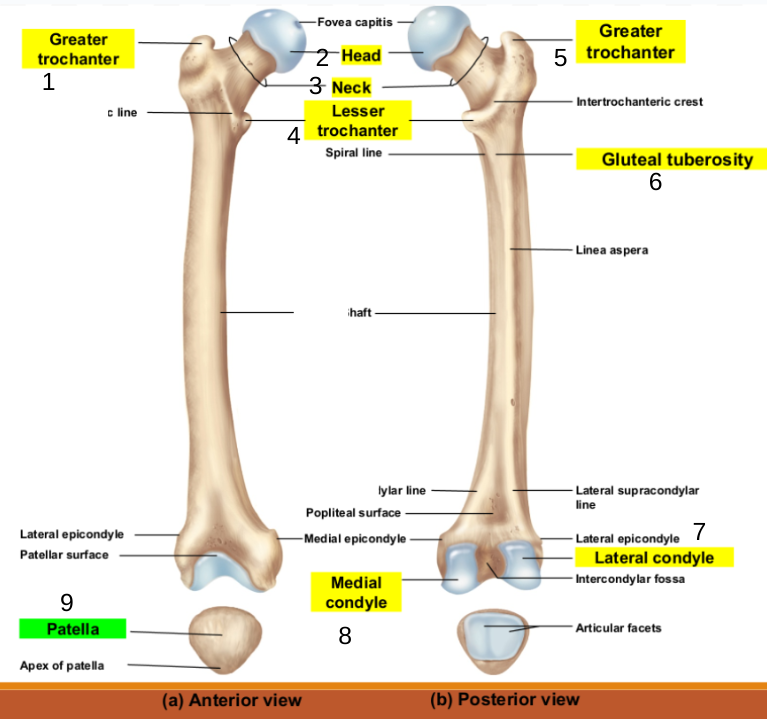

How do you orient the Femur?
First orient the bones so that the rounded head is superior (up) and pointing medially (toward the body's midline).
On the femur, look for the patellar surface, which is anterior. Also note how the articulating surfaces of the condyles extends far back on the posterior side (since the knee bends back but not forward).
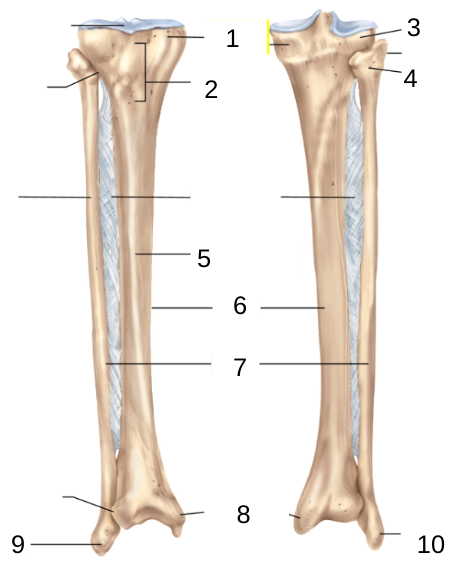
Tibia and Fibula
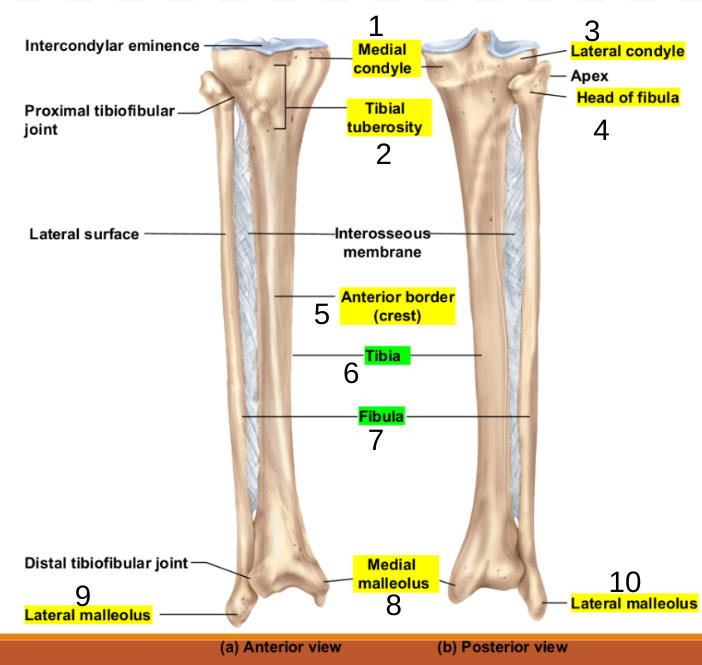

How do you orient the tibia and fibula?
First orient the tibia so that the larger flatter end is superior (up). The anterior border (crest or shin) should of course be anterior (front). Finally, the medial side can be determined by the medial malleolus (remember that the malleoli bracket the ankle and since the tibia is the medial bone of the lower limb, its malleolus must be medial).
Mnemonic for location of tibia and fibula: The fibuLA is LAteral.
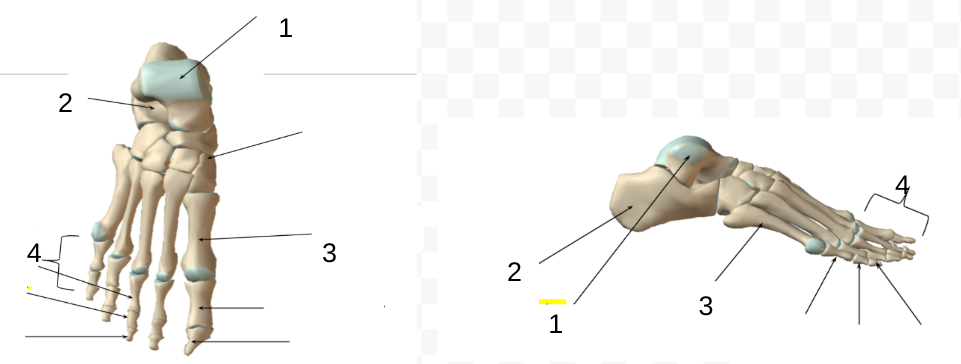
Foot
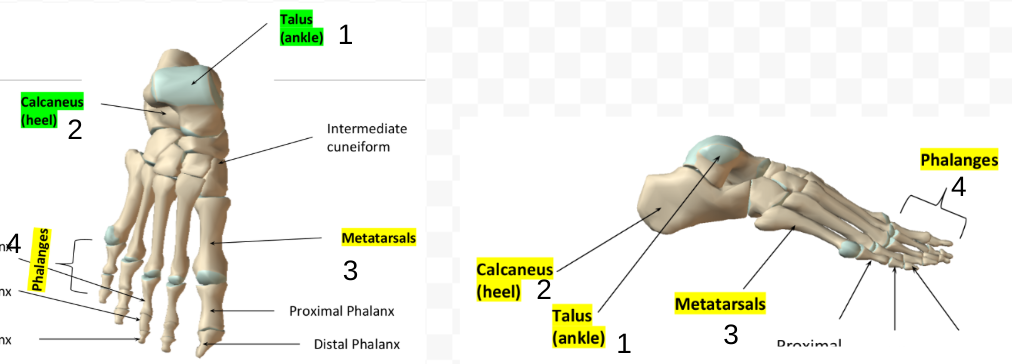
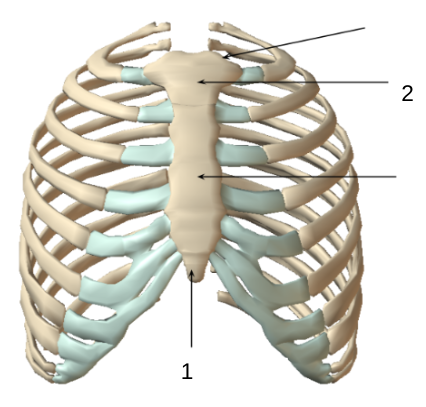
Thoracic Cage
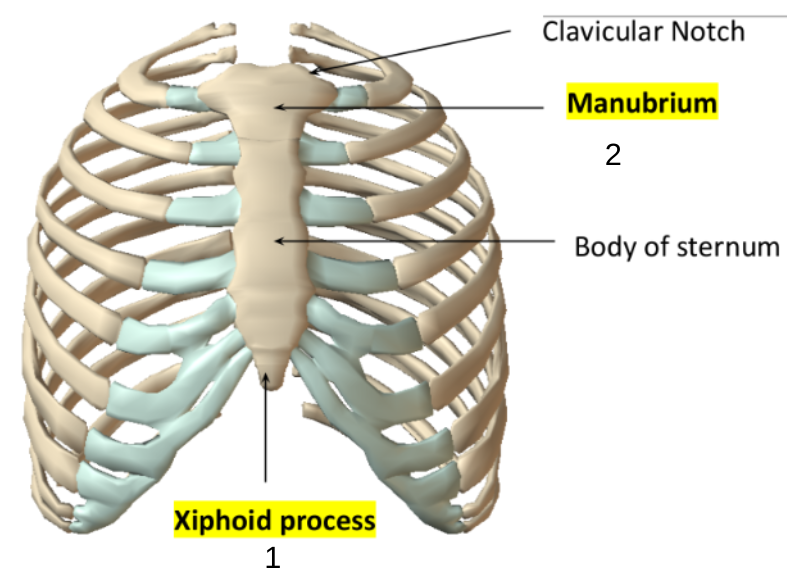
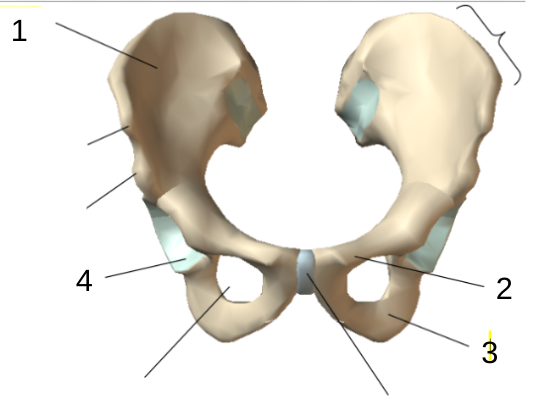
Pelvic girdle
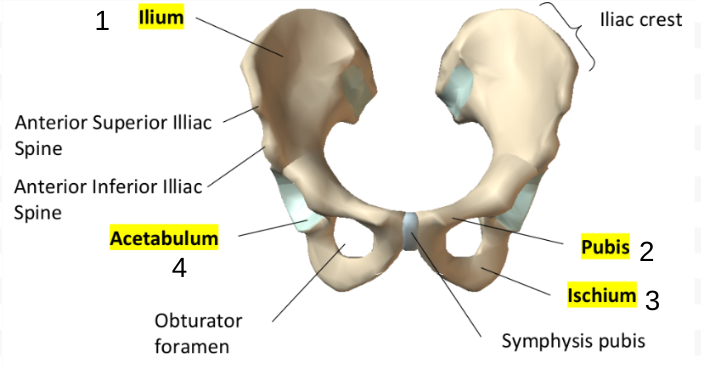
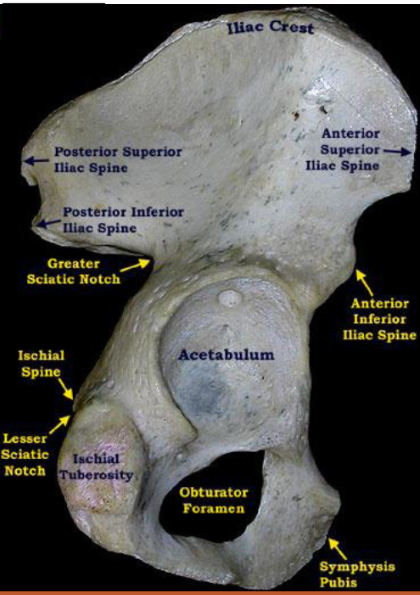
How to identify the right or left girdle?
The iliac crest is superior, hold it with acetabulum facing laterally (outward), and the obturator foramen inferior (down). Now all you need to do is determine which side is anterior vs. posterior, which can be done by looking for the rough pubic symphysis (anterior) that is at the midline to meet its fellow hip bone of the other side.
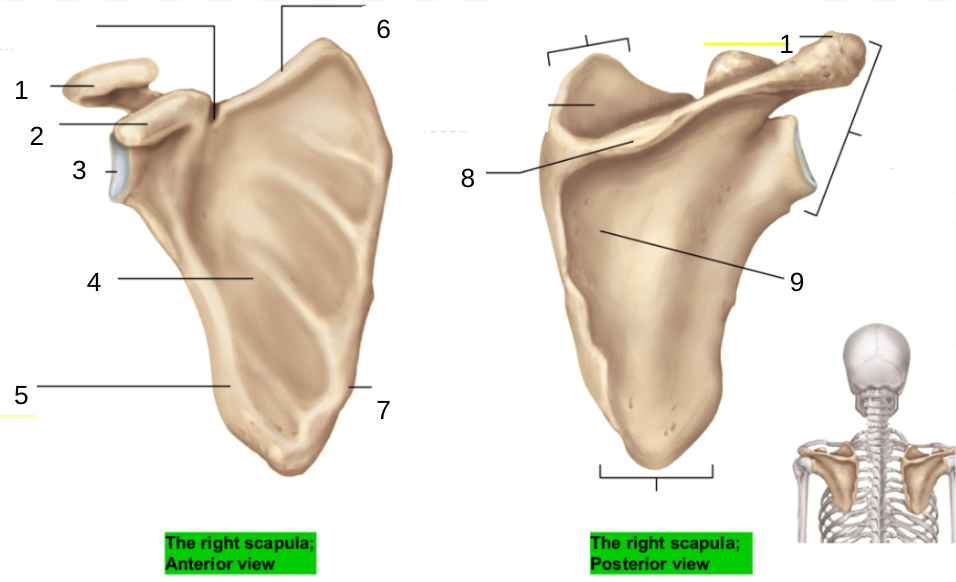
Pectoral girdle (scapula)
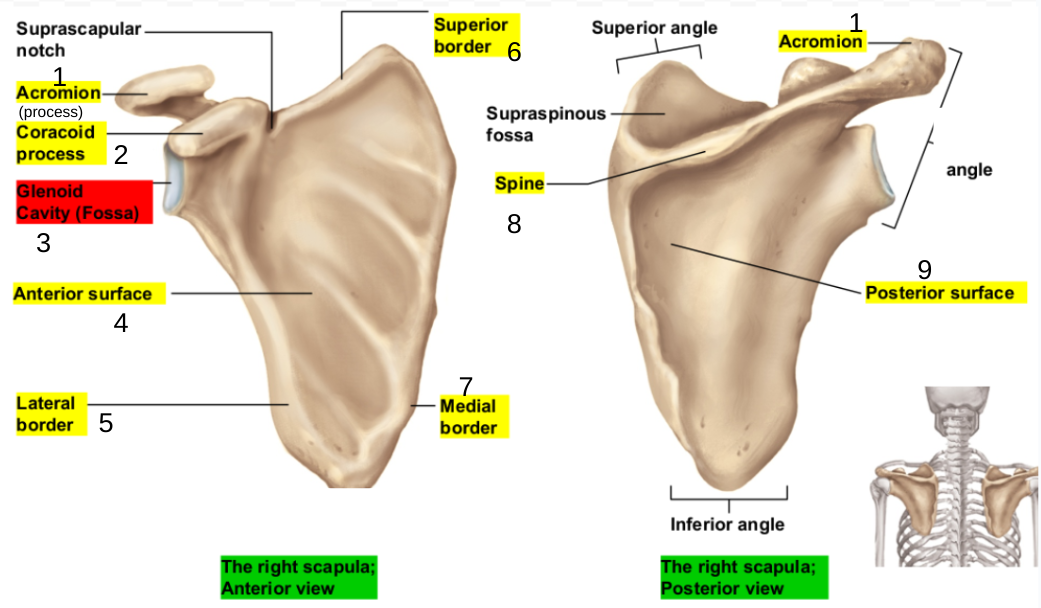
How to identify the right or left scapula?
Orient it so the glenoid cavity (articulating surface) faces laterally (outward) and the spine is posterior (toward back) and superior (upper).
The coracoid process should be anterior and superior.
The spine points at 2 o’clock (Right side of the clock) for the right scapula, and at 10 o’clock (Left side of the clock) for the left scapula.
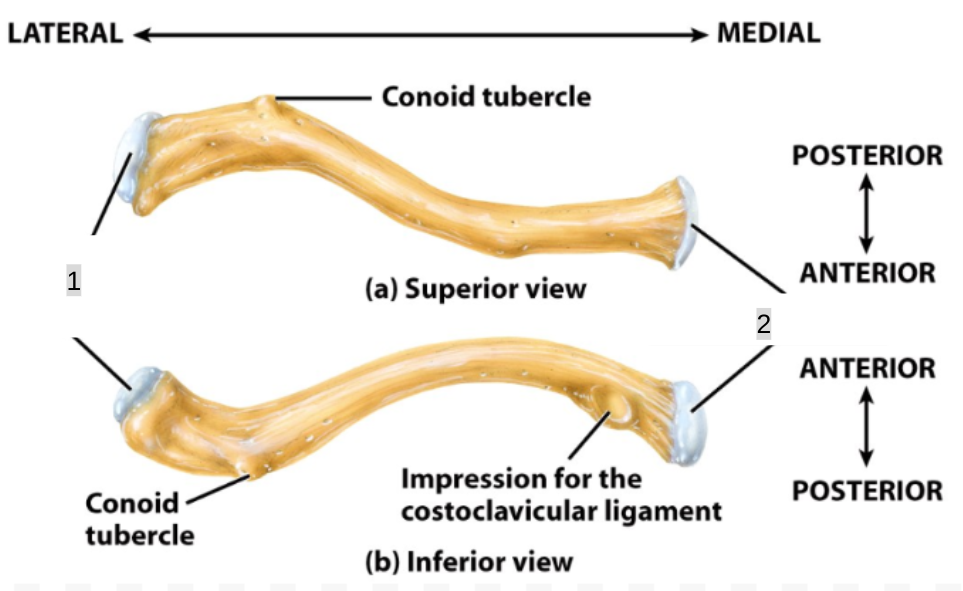
Clavicle
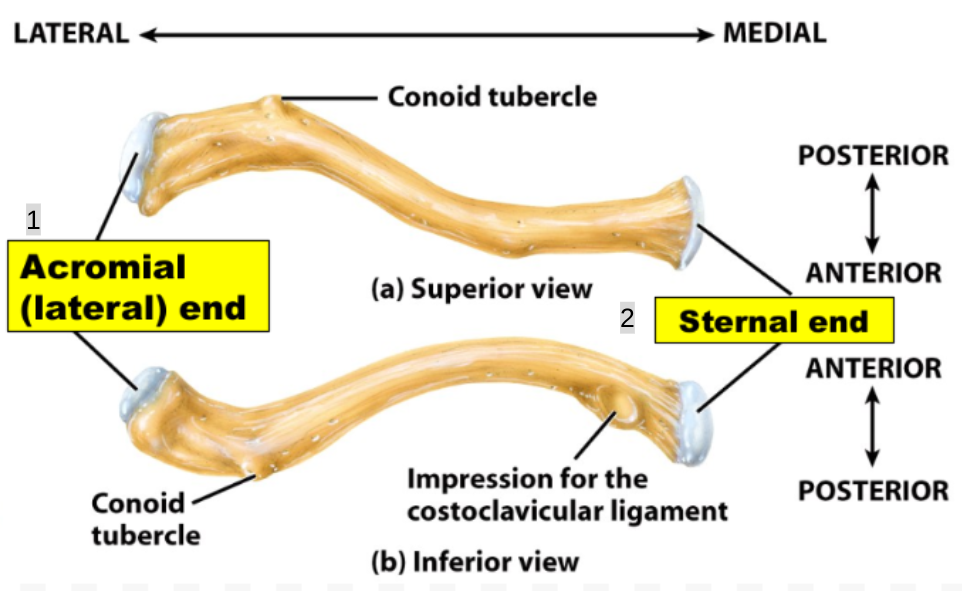
How to identify the right or left clavicle?
Orient the clavicle so the smooth (no grooves and ridges) superior surface faces up. Then, the rounded sternal (medial) end should face medially while the broad and flat acromial (lateral) end faces laterally.
Finally, the medial half of the clavicle should bulge OUT (convex anteriorly) first followed by its lateral half bulges IN (concave posteriorly).